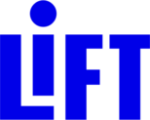A recent Chronicle of Philanthropy article highlights LIFT CEO Kirsten Lodal’s decision to evolve our already successful program model to drive even greater gains for low-income families across the United States. As we hone our work to meet the specific needs of parents with young children, we are drawing on lessons learned from behavioral science, human-centered design and lean design. Over the next two years, as part of our innovation and demonstration “lab” period, we are iteratively designing, implementing and improving new interventions across our four regions (Chicago, Los Angeles, New York and Washington, DC).
At LIFT, we have always believed that members (the parents/guardians we serve) know their own needs best and should be engaged in designing and evaluating the programs meant to serve them. That’s why we engaged members and community-based organizations across the country in a community listening tour as one of the first steps in our design process. Our objectives were to: (1) better understand the aspirations parents have for themselves and their children, (2) define the major problems parents are facing, (3) collect best practices and (4) determine what other organizations are doing and where LIFT can plug in to existing work.
Responding to the feedback we received, our regional and national teams are exploring both high-impact innovations that help families achieve near-term economic stability (e.g. connecting parents with cash transfers to meet their critical, immediate needs) and interventions that can help families achieve long-term economic mobility (e.g. access to higher education to help parents build assets). In addition to bolstering parents’ financial foundations, we are helping them develop lifelong personal skills and stronger community ties – for example, by working with them to build goal plans and facilitating peer group workshops. By intentionally building an ecosystem of support around parents, we hope to empower our members to continue the work they start with LIFT and build off their early successes.
As we launch our revamped model this summer – and continue to refine it this fall – we will evaluate our impact, identify and scale interventions that members indicate are working best and tweak or eliminate those programs that fall short of meeting parents’ diverse needs. At the same time, LIFT is working with partners like ideas42 to explore ways to encourage uptake and minimize parents’ barriers to entry into our programs, like offering opportunities for alternative program hours and virtual engagement.
By continuously refining our existing program and developing new initiatives to drive greater impact for families, we strive to give children the opportunity to grow up in households of increased family stability and overall household well-being. In doing so, we hope to help families break the cycle of poverty.
Read part 2 of this blog series to find out what we learned from parents during our community listening tour.
